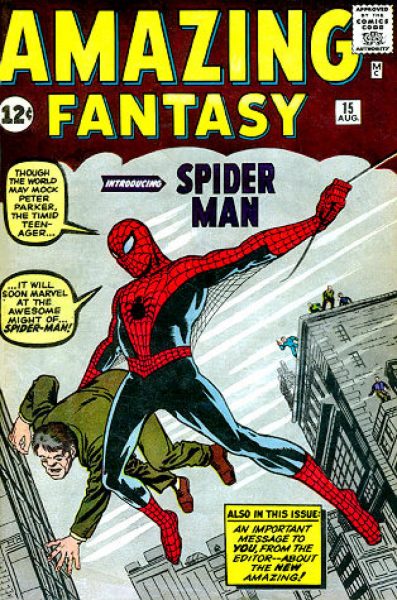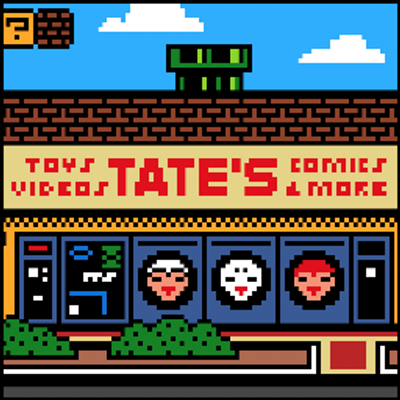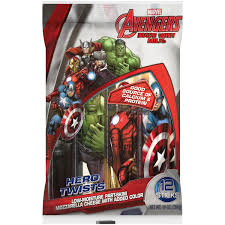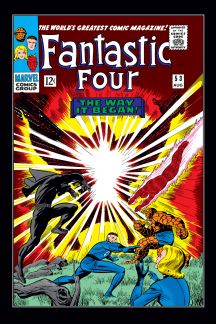
“I’m no prophet, but I’m guessing that comic books will always be strong. I don’t think anything can really beat the pure fun and pleasure of holding a magazine in your hand, reading the story on paper, being able to roll it up and put it in your pocket, reread again later, show it to a friend, carry it with you, toss it on a shelf, collect them, have a lot of magazines lined up and read them again as a series. I think young people have always loved that. I think they always will.”
— Stan Lee
 To read about the current state of the comic book industry is to read about a cataclysmic cave-in looming just over the horizon, a superhero supernova that will collapse the industry in to a dark neutron star, a shell of its former self. Media op-ed pieces are rife with buzz words and phrases like “Bubble burst”, “store closing”, “over-saturation” and “speculators” and “just like the 90’s bubble”. While some of this I happen to agree with – the logic and economics support it – I have found myself divergent on a great number of other matters surrounding the topic. This very same discordance, however, does not preclude curiosity from weaving its way though my thoughts.
To read about the current state of the comic book industry is to read about a cataclysmic cave-in looming just over the horizon, a superhero supernova that will collapse the industry in to a dark neutron star, a shell of its former self. Media op-ed pieces are rife with buzz words and phrases like “Bubble burst”, “store closing”, “over-saturation” and “speculators” and “just like the 90’s bubble”. While some of this I happen to agree with – the logic and economics support it – I have found myself divergent on a great number of other matters surrounding the topic. This very same discordance, however, does not preclude curiosity from weaving its way though my thoughts.
And with that in mind, I wanted to find out for myself what is happening in today’s market. What are the thoughts and concerns in a place I visit weekly?
Is there a bubble – are we heading for the end? What about the comics?
I reached out to Tate Ottati, owner of Tate’s Comics in Lauderhill Florida, to have some of the questions percolating in my mind answered. Established in 1993, Tate’s Comics has grown in to one of the largest comic book retailers in south Florida and has become a premier destination for anyone seeking to fulfill their geek needs. Tate’s has remained large and viable, has grown in to multiple locations and one of the reasons for this is their diversification of products. Not only do they have an extensive back-issue inventory and an immense wall of new issue releases from both “big 2” and independent publishers, but they also feature statues, action figures, trade paperbacks, manga, trading card games and even Japanese candies. Tate’s commentary substantiated my own stance on the subject however a couple other themes emerged, namely the ideas of follow-through and diversity.

Jesse: Can you tell us how your current publisher mix looks among regular sales and subscription customers? How does that compare to 6 months ago?
Tate: It’s really been about the same, just steady sales.
Jesse: Marvel has just a few titles in the top 20 according to Diamond Publishing Rankings, even for flagship titles like Spider-man and Deadpool. What trends are you seeing for these titles in your stores?
Tate: Sales of the flagship titles have leveled off, mainly because their publishers don’t market their books to the masses that well.
Jesse: How has interest been in your shop regarding the new titles from the current Marvel Now! campaign (like Prowler, Unstoppable Wasp, Slapstick)? Are people asking for these and are they adding them to their pull lists?
Tate: There was lots of hype in the beginning , but the publishers have no follow up marketing for these titles, they are already on the the next event, to hype that up.
Jesse: How does that compare to the reception from customers that DC’s Rebirth has received?
Tate: Rebirth had great sales ,but not as big as new 52, again publishers don’t really market comic books to the main stream world.
Jesse: I understand there is a typical low point at this time of year but are you projecting an uptick in sales, given the current solicited events and titles for Marvel such as Monsters Unleashed and Secret Empire? Or are you worried about the current state of the market and that these current trends will be here to stay unless some companies do some course corrections?
Tate: There will be hype for these events, but then no follow through marketing to keep the hype going.
Look, diversity is tremendous – especially for Marvel Comics, a company that has prided itself on being the “World outside your window”. I am a proponent of diversification not only in the characters we enjoy but also in product availability. But I want to focus on the comic books themselves as a medium. Let’s talk about Tate’s other emergent theme – follow-through – and then what these two themes mean for each other.
Whether Marvel or DC, it seems to be in Tate’s Comics that flagship titles have leveled off. Tate told us that the follow-through on new titles is just not there. We are caught in an endless cycle of crossover events that bring the focus ever forward, without giving current titles the time they need to develop and be cultivated properly. Since 2004’s Avengers Disassembled, we have been assaulted with major events and these have come with ever-increasing frequency. Line-wide events that eat up every title became the focus of the marketing hype-machine. Events used to be a special summer event, a once a year happening that felt special and -often times – a story sequestered to the pages of the Annual issues (an appropriate place with their extra pages and square-bound goodness). If we focus on Marvel for a moment, to illustrate this phenomenon, we can travel back to the 1970s, where there was one notable crossover event – the Kree-Skrull War. In the 1980s we had three events which had their own titles: Contest of Champions, Secret Wars and Secret Wars II (these were made by Jim Shooter to sell toys through Mattel but that’s for another day). Throughout that decade there were 6 other events (Fall of the Mutants, Inferno, Acts of Vengeance, The Evolutionary War, Mutant Massacre and Atlantis Attacks) that crossed over but even these would last only a few issues. The 1990s exploded with crossovers (Like X-Tinction Agenda, Maximum Carnage, Onslaught, Age of Apocalypse, Clone Saga) but only a couple true events; books that carried their own indicia listed title name. It wasn’t until that 2004 event Avengers Disassembled that we saw an explosion in events, line-wide stories that carried their own title and numerous other spin-offs and tie-ins. From 2004 until 2017 there have been over twenty events and that is just for Marvel Comics and this does not include all the crossovers that wove in and out of these. This is extraordinarily more than the previous three decades combined. That marketing hype machine that Tate spoke of is focused on the events, ignoring the books that continually have less and less time for their story lines to develop. So when Marvel launches their next “Now!” campaign and sales quickly drop off of their titles’ volumes, it can largely be attributed to the publisher’s (lack of) follow through on the book. That, coupled with the lack of time between a story-interrupting event and the decompression phenomenon seen in modern comic books, is deadly for a title’s survival potential.

When the second Marvel Now! campaign launched in December of 2016 and gave us new titles like Nova, Slapstick, Solo, Foolkiller, Thanos and The Unstoppable Wasp, what happened after the first issue? Other than the traditional solicitations via “Previews” did marketing push these titles? Did they highlight them as books that readers should be trying out? Did they update us on what would be happening in new story arcs in a way that made us want to pick up the title? Did we have a fun Bullpen report from Stan Lee to inspire us and energize us to read more and try newer. No. Instead we heard about Monsters Unleashed and Death of X and Inhumans vs X-Men. More events.
 Now, where we do have the follow-through are with titles that correspond to upcoming Marvel Studios releases. Thor and Guardians of the Galaxy are getting a push due to movies releasing in theaters. Black Panther is soon to have three titles bearing his name. Why? Black Panther comes out in a year. The Inhumans are currently in the throes of a major war with the Mutants. And – surprise – the Inhumans television show debuts this fall (on IMAX first). While the focus has turned to the events and film tie-ins, even the flagship titles – Spider-man, Iron Man, Batman, Superman – have leveled off, Tate confirms. The focus and the follow-through is elsewhere.
Now, where we do have the follow-through are with titles that correspond to upcoming Marvel Studios releases. Thor and Guardians of the Galaxy are getting a push due to movies releasing in theaters. Black Panther is soon to have three titles bearing his name. Why? Black Panther comes out in a year. The Inhumans are currently in the throes of a major war with the Mutants. And – surprise – the Inhumans television show debuts this fall (on IMAX first). While the focus has turned to the events and film tie-ins, even the flagship titles – Spider-man, Iron Man, Batman, Superman – have leveled off, Tate confirms. The focus and the follow-through is elsewhere.
It’s understandable that Marvel would want to focus on the success of Marvel Studios and Marvel TV. Developing the film side of the business has been a strategic initiative of Marvel’s ever since their filing of chapter 11 back in December of 1996. Since the Disney buyout in 2009, and with Kevin Feige at the helm of the unified cinematic universe, the studio has raked in (gross) well over $8 billion dollars (already double the initial investment of $4 billion). And since 2009, the direct market has averaged ~$500 million gross per year with the Trade/Scholastic/Newsstand side increasing from $700 million to $900 million yearly. Those are truly large numbers, indeed, but not $8 billion large. They’ve also licensed their products out for clothing, mugs, string cheese, lunch boxes, toys, more toys, DVDs, cell phone applications, more toys, cell phone cases, sandwich containers and really anyone with interest and who are willing to follow the terms set forth in the Marvel licensing agreement. Honestly, this is not surprising. I mean, they did put out a toilet paper story in the 1970s (you can read about that here: http://www.comicbooked.com/famous-crappy-comic-book-ever/). The 1980s had the Secret Wars toys deal not to mention the Star Wars and Hasbro deals and in the 1990s we had a boom in the trading card industry with Marvel’s Fleer/Skybox deal (which was ultimately a failure when the trading card industry collapsed but that is beside the point here).
 All of these ventures are fantastic because it puts these characters out there for the mainstream folks, the people who only know these characters for the movies and for those who are not Wednesday Warriors. But what about the comic books? What is the incentive to visit a comic book shop to pick up an issue of a character they see on their favorite piece of “Hero Twist” string cheese?
All of these ventures are fantastic because it puts these characters out there for the mainstream folks, the people who only know these characters for the movies and for those who are not Wednesday Warriors. But what about the comic books? What is the incentive to visit a comic book shop to pick up an issue of a character they see on their favorite piece of “Hero Twist” string cheese?
If I walk in to Bed, Bath and Beyond and see a cool 24 oz tumbler with Iron Man’s image on it, where is the call to action to walk in to Tate’s Comics down the street and try out the latest Iron Man issue or trade paperback? Where is the marketing follow through?
This phenomenon has extended to the comic book convention scene as well. I have been to a number of conventions over the past couple of years and have noticed an obvious decline in the number of comic book vendors at these events. In their place are the Funko Pop! booths, the art print sellers and – where most of the money goes – the celebrity signing section. The conventions have become about movie actors, hyping the next comic book movie or video game and selling tickets to people who don’t read comic books, We can buy cosplay paraphernalia, light sabers, Pop vinyl convention exclusives, T-Shirts, hot dogs, blu-rays, $12 6″ pizza pies and vintage VHS tapes but what about the comic books? Operating costs of the convention organizers have increased drastically along with celebrities’ guarantees as these movie stars from billion-dollar film franchises come in for a piece of the pie. These costs translate to ever-increasing costs for tables and booths, the comic book vendor with an already narrow profit margin. At the last booth I worked, the owner remarked that she may not come back to the next convention as the profits just aren’t there like they used to be. I’ve worked in Artist Alley as well and even there folks say traffic is light, it’s hard to make any money even if you are comp’ed the table. Big names like Neal Adams are not immune to this; he told me booth traffic was light even for him last summer. Convention organizers boast big numbers in ticket sales but these people are not in the comic book booths.
 So, with that all said, we have to ask “Where are we now?” and “Where are we going?”. The industry is at a crossroads, but one that will become an impasse if the industry does not begin doing some self-reflection. Where are we now? We are in a world where superheroes have never been more popular. Superhero fans were once the subject of ridicule, of the nerd in his basement and the outcast needing an escape but they are now en vogue and ever present. Superheroes are now cool and superhero movies are experiencing a cinematic golden age. Where once the movies were something to watch and later roast for their cheesiness, they are now attended with the expectation of being a masterpiece of visual storytelling. Where once you had a Thor lunchbox to be unique, you now need one to keep up with the cool kids. Where once conventions where held in basements and backrooms of hotels, they are now the mega-events that everyone wants to attend. Superheroes have never been more popular than they are now (notice I’m saying superheroes and not comic books).
So, with that all said, we have to ask “Where are we now?” and “Where are we going?”. The industry is at a crossroads, but one that will become an impasse if the industry does not begin doing some self-reflection. Where are we now? We are in a world where superheroes have never been more popular. Superhero fans were once the subject of ridicule, of the nerd in his basement and the outcast needing an escape but they are now en vogue and ever present. Superheroes are now cool and superhero movies are experiencing a cinematic golden age. Where once the movies were something to watch and later roast for their cheesiness, they are now attended with the expectation of being a masterpiece of visual storytelling. Where once you had a Thor lunchbox to be unique, you now need one to keep up with the cool kids. Where once conventions where held in basements and backrooms of hotels, they are now the mega-events that everyone wants to attend. Superheroes have never been more popular than they are now (notice I’m saying superheroes and not comic books).
This popularity has, in part, also driven the current speculator market. As movies are hyped and character appearances are teased, their comic book appearances are scooped up with the hopes that they will be more valuable down the road. While there is some semblance today of the 1990s bubble that eventually burst (namely relaunches, variants, gimmicks and events that went nowhere like Death of Superman) it is, in fact, quite different. The speculator market of today is after very specific books, some printed long ago and often times these have very limited print runs (3 thousand for a color version of a store exclusive for example). This is unlike the million plus print runs of some of the 1990s titles that were hoarded in their day. Superman #75, Superman’s Death, sold around 3 million copies, for example, but speculators were buying five, ten, a dozen copies and inflating sales numbers falsely leading the publishers to think the market was healthier than it truly was. Print runs grew to match the inflated sales figures and when collectors were burned on deaths that didn’t last, death mates, delays and the like, the disillusioned collectors of the 90s left the hobby, leaving the publishers with massive prints runs already hitting the printers and retailers with massive amounts of unsold stock. This is not what will happen today. The industry is truly booming. The industry can and it will survive even if there is a down-turn in printed media. But it will survive, it will go on. There will always be someone who loves the feel of a comic book in their hands, the look of the book on the shelf or the excitement of it as you share it with a friend. There will always be that person who loves to visit Tate’s Comics and dive in to the back issue bins looking for collector gold. Collectors’ habits might change, they might seek trade paperbacks or digital media but there will always be a market for comic books. In a diverse place like Tate’s Comics, here in south Florida, a bubble-burst is not where the concern lies.
 Compared to the 1990s, the speculator market of today is a very small, niche part of today’s industry. Retailers won’t be left with entire long boxes of unsold books when speculators are going for single back issues, often printed long ago, and double and triple digit ratio variants that a store might only have one or two copies of. When the first appearance of Ramonda or Ulysses Klaw doesn’t explode in value, the market won’t implode upon itself. The proverbial eggs have been spread widely and that is an aspect of diversification that works well today.
Compared to the 1990s, the speculator market of today is a very small, niche part of today’s industry. Retailers won’t be left with entire long boxes of unsold books when speculators are going for single back issues, often printed long ago, and double and triple digit ratio variants that a store might only have one or two copies of. When the first appearance of Ramonda or Ulysses Klaw doesn’t explode in value, the market won’t implode upon itself. The proverbial eggs have been spread widely and that is an aspect of diversification that works well today.
For a store like Tate’s Comics that sells a menagerie of merchandise and has a large inventory of new and back issue stock, it makes for a healthier sales model. When the focus of the Publisher’s marketing is on merchandise and movies, it makes sense to have the store stock to align with that. Otherwise, you’ve alienated yourself from publishers’ marketing strategies and separated yourself from a large group of your potential audience and target demographics. Diversifying the product line has worked wonders for Marvel Comics and DC Comics; it can work for retailers as well. If publishers are dropping the metaphorical ball on pull-through, this is where the retailers can step in to pull through their customers. But it is up to the publishers to give these retailers new customers and additional foot traffic. Whether in the comic book shop or at a convention or the lobby of a movie theater, the industry as a whole needs to improve on the pull through on their diverse line of products. It needs to improve on the connection between the movie and the page, the t-shirt and the graphic novel. Maybe it comes down to something as simple as, in Marvel’s case, Marvel Publishing (Ike Perlmutter) and Marvel Studios (Kevin Feige) deciding to finally play nice. Maybe it will require a more complicated restructuring and a new business plan but whether it is simple or complicated it needs to be done. Maybe they should put those digital codes on the sandwich boxes instead of comic book pages. Maybe movie trailers or Blu-Ray movies should include a digital code instead of putting them in comic books people have already bought. Maybe digital platforms should include geo-located retailer information. You see, pull-through via a diverse range of products and with the aim of giving comic book shops traffic.

While product diversification is great, and it has been fantastic for retailers like Tate’s Comics, it can not come at the expense of the very thing that gives the industry it’s spirit and it’s roots and its many decades of history: Comics.
What the market needs is a re-focus and to remember why it became so loved over so many years and by so many. It needs to bring the heart back to comic books and stop pandering to current audiences with the endless onslaught of events and relaunches and superficial movie tie-ins. It needs to ditch the “all-new number one” phenomenon, the “seasons model” and the gimmick that savvy collectors of today can see through for their lack of substance and value. It needs to get back to the core of what makes comic books great: stories.
What is Iron Man without his Demon in a Bottle? What is Spider-man without his Death of Gwen Stacy? What is Batman without his Killing Joke or Superman without his Red Son? These images, these characters need these stories to make them come alive in our hearts and minds. We need these books to read and re-read and show to a friend and collect on a shelf like Stan Lee said to give us our connection to them. People have loved the promise and the look and the feel of good ol’ fashioned comic books and many of us always will. These characters are more than just product placement. They are a form of escapism and a beacon of hope found in 10 1/8th” x 6 5/8th” saddle stitched 32-page stacks of paper found at your local comic book shop. They’re action and adventure and horror and mystery. They’re ties to our personal lives and stories of hope that help us to get through our own struggles. They’re validation that we are unique, that are insecurities can become our strengths, that what makes us diverse is what makes us invaluable.
And you can’t get that on the side of a 24 oz coffee mug.

















Variants and re-births have killed collecting. When you want to collect all of the issues of your favorite title and there are 10 variants to chase, some reaching 50 dollars, the thrill is gone. The lack of local comic book shows has also hurt. It’s all about speculation. Sad.
These click-bait experts of the day have been talking about the bubble bursting ever since Walking Dead became a hot book in the late 90s, before the TV show was even announced. I don’t think the bubble will burst, because I don’t think its a bubble. Its just what comics are worth nowadays.
Like the stock market speculatory stocks rise and fall in short time frames due to day traders but there’s also blue chip long term stocks.
Not saying comics are like stocks since most of us aren’t retiring on their comic book collections but its similar in the fact that people will still sell comics to buy comics like people sell stocks to buy stocks. Multimedia and Online sales will keep sales robust.